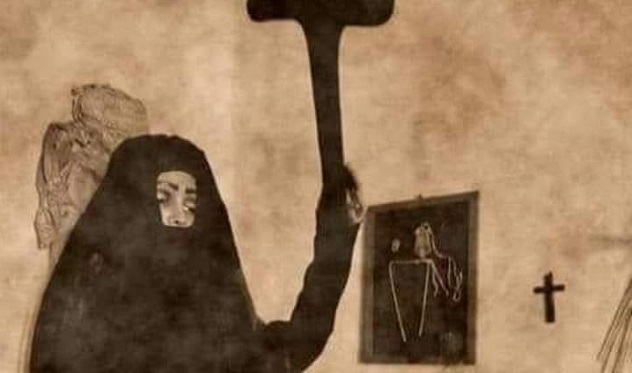A Door Left Open
In rural Sardinia, especially in areas like Marghine, Planargia, and Gallura, stories tell of a mysterious woman known as Sa Femmina Accabadora. She arrived quietly, often late at night, entering homes whose doors had been left open for her.
Summoned by families—or at times by the ill themselves—she was believed to bring a painless end to suffering, without compensation, as paying for death conflicted with local religious customs.
Tools and Rituals of the End
The term accabadora comes from the Sardinian word s’acabbu (“the end”) or the Spanish acabar (“to terminate”). Accounts describe her dressed in black with her face covered, removing amulets and religious charms from the patient’s body.
She placed a giualeddu, a wooden replica of an agricultural yoke, beneath the bed or pillow—believed to release souls held back by past offenses, such as burning a yoke or tampering with land boundaries. The methods varied by region, but many descriptions mention the use of the mazzolu—a wooden or olive stick used to strike the temple or neck. In some versions, she used a pillow or cradle to carry out the act, often after softly reciting prayers or holding the person in her arms.
Echoes in Testimony
There are no official records confirming the acts of Sa Femmina Accabadora, but scattered testimonies and oral accounts persist. Some anthropologists argue that these women were not killers, but attendants—offering comfort and presence during the final moments of life.
Yet specific references have survived, citing three alleged interventions: in Luras in 1929, Orgosolo in 1952, and Oristano. In each case, belief in the practice was shaped by historical isolation, limited medical access, and deep-rooted agrarian customs.
Wider Traditions and Beliefs
The idea of easing suffering at death was not unique to Sardinia. Similar customs have been referenced in southern Italy, especially in the Salento region. The folklorist Saverio La Sorsa wrote of practices where objects like a yoke, axe, or key were placed beneath a dying person’s bed to hasten death.
These items were believed to relieve spiritual or moral blockages. In the Sardinian accounts, the ritual was not just physical—it blended Catholic and pagan elements in an effort to assist the soul’s departure.
Today, while some researchers question whether Sa Femmina Accabadora ever truly existed as an executioner, the oral traditions and regional consistency of the stories continue to spark debate. Whether fact, distortion, or something between, the figure remains embedded in the cultural memory of Sardinia.

